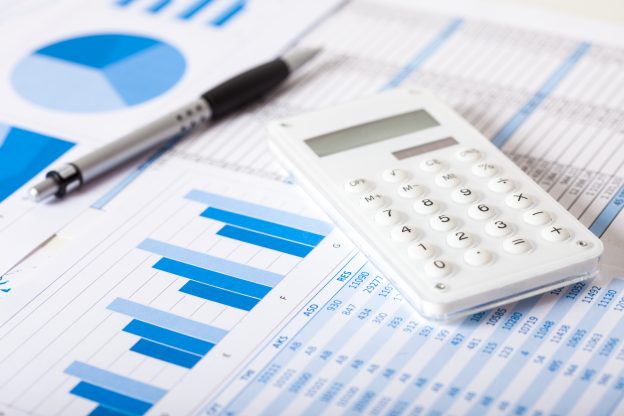
The German government announced in early September that it will develop a series of new measures to reinvigorate the growth of the domestic wind industry. This pledge came after the German Wind Energy Association (BWE) reported that the newly installed onshore wind capacity in the country during the first half of this year registered a massive plunge of 82% compared with the same period last year. Although the German government has made clear of its intention to aid the struggling wind industry, German manufacturers in the wind power supply chain generally feel that more attention should have been paid sooner to the issues that have constrained their operation.
Among the advanced economies, Germany has shown strong commitment to the transition to renewable energies. Since the country formally began on this path in 2002, the shares of nuclear energy and fossil fuels in its energy mix have contracted over the years while the shares of renewable energies have expanded. Renewables finally overtook coal as the main source of electricity generation in Germany in 2018. The collective share of renewables in the country’s energy mix came to 38.2% by that year, whereas the share of coal dropped to 35.3%.
The contribution of wind power has been indispensable in helping Germany to achieve its green energy goals. Presently, more than 20% of Germany’s utility power is sourced from wind. However, Germany’s wind industry has fallen on hard times in the recent years after enjoying a period of rapid growth. Policy changes and popular opposition against the construction of wind turbines have resulted in a sharp drop in demand. Peter Altmaier, Federal Minister for Economic Affairs and Energy, stated that public and private efforts to promote wind power have been met with stubborn resistance over the past few years.
Wind turbines are long recognized for being highly effective in producing clean and carbon-free electricity, but they are also well-known for instigating fierce “not in my backyard” protests. Some models of wind turbines can emit loud and irritating noises from their blades and gears. Furthermore, there are studies reporting that wind turbines are very hazardous to wild birds and bats. For various reasons, flying animals and insects often crash into the rotating blades of onshore wind turbines. As of now, the German government has received around 600 citizen petitions against the establishment of new wind projects.
Due to waves of protests and legal challenges, the government has backtracked from its position on wind power. The subsidy support for wind power, which had been in place for almost 20 years, was discontinued in 2016. The official reason for the termination of subsidies was that the domestic wind industry has reached its developmental maturity.
Then, Germany formally adopted the auction system for procuring renewable electricity in 2017. Along with the new approach came quotas for the annual solar and wind installations. The quota for onshore wind auctions is set at 2.8GW for 2019 and 2.9GW for 2020. Previously, the government provided a special set of rules for projects from “citizen-owned energy cooperatives” that are smaller in scale compared with corporate wind developers. Specifically, cooperatives could offer lower-than-average bid prices in exchange for favorable considerations for their tender submissions and longer project implementation period. Although the special treatment for small energy cooperatives was abolished in 2018, the wind industry has complained that this policy already distorted the market. Moreover, the quotas that limit the deployment of renewable generation technologies are still in effect.
Critics of the government’s current approach to wind power have asserted that securing the construction permit for an onshore wind project often takes several years, so investors have to wait for a rather long period before they start to see any returns. Investors are also discouraged by the constant need to adjust their cost and return projections because of the sudden shifts in policies. Employment data provided by the Bundestag (the lower parliament) show that Germany’s wind industry lost approximately 26,000 jobs from when the government withdraw its subsidy support in 2016 to the present. The job loss in the domestic coal industry was actually lower during the same period. IG Metall, one of Germany’s major trade unions, also warned that situation in the domestic wind industry is quite dire, as it has already shed around 8,000 to 10,000 jobs since the start of 2018.
According to BWE, just 35 onshore wind turbines were installed in Germany in the first half of 2019, representing a huge decline of 82% YoY in the total added capacity for the period. To address the precipitous decline of the domestic wind industry, the German government held a “crisis summit” with industry representatives, environmental groups, trade unions, and anti-wind activists in early September. Following this event, Altmaier said that new measures on dealing with the industry’s challenges will be proposed within the next few weeks.
Nevertheless, wind energy developers working in Germany believe that the government’s response has come too late because their warnings have gone unheeded for too long. Yves Rannou, CEO of the German wind turbine manufacturer Senvion, told AFP that his company has been requesting assistance from the government for many months; but now it has to close down because the share of domestic sales in its revenue stream has fallen from around 60% to just about 20%.
(This article is an English translation of news content provided by EnergyTrend’s media partner TechNews. Photo credit: Petter Palander via Flickr CC BY 2.0.)







